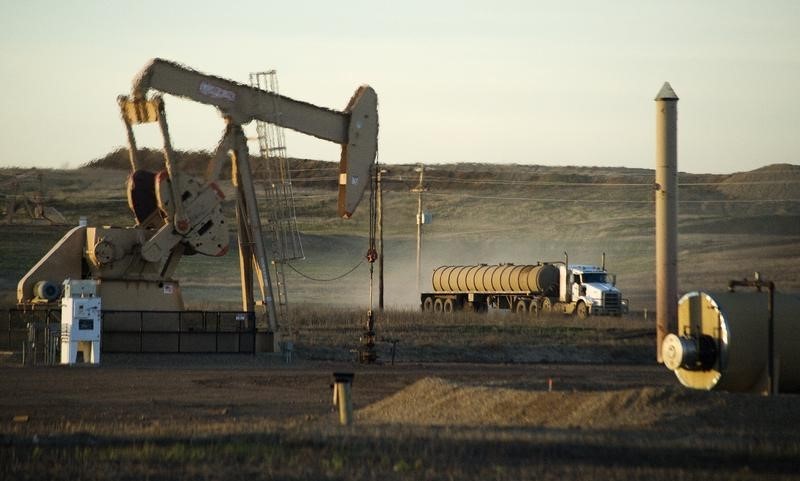By Ketki Saxena
Investing.com – As of 1:10 p.m ET, Brent futures were at $121.11 a barrel, or 4.88% higher so far today, while WTI futures were at $114 .30, or 4.60% higher.
Recently volatile crude surged today after disruptions to Caspian Pipeline Consortium (CPC), which supplies oil between Russia and Kazakhstan.
After warnings from Russia yesterday about the disruptions, CPC exports were fully halted earlier today. Russia reports that the damage is weather related, and warns that oil exports may drop up to 1 million barrels per day (bpd), an amount which accounts for 1% of global oil production. Repairs will reportedly take over a month.
Crude has been highly volatile since the Russian invasion of the Ukraine and a raft of sanctions on Russian energy, and continues to advance on fears of prolonged supply concerns from one of the world’s top exporters of crude.
Russian crude supply is particularly critical at a time of deliberately low production from OPEC, and plunging U.S. crude stockpiles, which the U.S. strategically releases to stabilize the price of crude. As per IEA data, U.S. crude stocks fell by 2.5 million barrels for the week ended March 18, federal data showed, compared with expectations for a modest increase. Production remained flat at 11.6 million barrels per day for the seventh straight week.
Interestingly, the Canadian government announced yesterday that it will work with oil sands producers to increase production and exports, specifically by optimizing capacity around the country’s inefficient and embattled pipeline system.
Canada, which holds the third largest reserves of oil globally, is hoping to ease and address global supply constraints, and enable its oil-dependent economy to benefit from the surge in crude prices. Canadian producers, however, remain reluctant to increase capital expenditure and invest in growth. Canadian oil and gas companies have instead prioritized paying down debt and returning value to shareholders through increased dividends.
At time of writing, RBOB gasoline futures, which closely track the price of crude, were up 2.66%.
As of 1:10 p.m ET, U.S. natural gas futures were trading at $5.32, or up 0.87% at time of writing. Natural gas was higher again today on continued supply concerns and expectations of cool weather next week.
U.S. natgas prices also tracked European futures higher. At time of writing, ICE (NYSE:ICE) Dutch Natural Gas futures, the benchmark for EU gas, were up 10.7%.
Adding to supply concerns, European natural gas futures were driven higher by an announcement from Putin that “hostile nations” will be required to purchase Russian gas in Rubles. The list of hostile nations includes all EU members.
With the current sanctions, it may be complicated for the EU to trade in the Rouble, and it remains yet to be clarified how the EU plans to pay for gas going forward. The EU currently depends on Russia for approximately 40% of its natural gas. According to Gazprom (MCX:GAZP), 58% of its natural gas sales to the EU are settled in Euro, 39% in USD, and about 3% in pound sterling.
EU gas futures soared on the news despite an announcement from the White House yesterday regarding a plan by the U.S. and its allies to curb European dependence on Natural Gas. The plan will be further explicated tomorrow.
Natural gas was also given support by continued disruptions from the behemoth Troll oil and gas field in Norway, which curbed operations yesterday after a compressor failure.
